Topics
Category
Era
Gunflint Trail
The Gunflint Trail is a nationally designated scenic byway, also known as Cook County Road Twelve. It starts in Grand Marais and runs fifty-seven miles northwest to Trail’s End Campground near Saganaga Lake on the border with Canada. The trail, which cuts through parts of the Superior National Forest and the Boundary Waters Canoe Area Wilderness, is a popular destination for fishing, camping, canoeing, hiking, and other outdoor recreation.
Indigenous peoples have inhabited the northeastern area of Minnesota for thousands of years. By the mid-1700s, Ojibwe people were living in the region, and French fur traders from Montreal had begun to trade with them. Lakes and streams provided transport routes for them to traverse by canoe. Travelling by foot, snowshoe, or sled was possible, but less ideal.
Local lore suggests the Ojibwe had developed a footpath—the forerunner of the trail—beginning at Biiwaanag Zaaga’igan (Gunflint Lake) and extending at least to Gichi Biitoobig (Grand Marais) by 1800. Around this time, the area got its name from the flint, or chips of chert, that French traders would gather for their flintlock firearms at the lakeshore where the path began.
In 1875, Henry Mayhew, a fur trader, prospector, land speculator, and entrepreneur, hired a crew of Ojibwe men to construct a narrow wagon road between two of his trading posts. The road started at Grand Marais and continued for twenty-four miles, turning sharply northeast at Hungry Jack Lake. It ended at Rove Lake—the site of Mayhew’s second trading post. Rocks, roots, brush, and stumps made the early trail nearly impassable except in winter.
Mayhew reported finding iron ore deposits at the west end of Gunflint Lake in 1886, which attracted investors from the state capital. The American Realty Company was then incorporated and purchased large tracts of land. In the early 1890s, construction of Paulson Mine began a few miles southwest of Gunflint Lake. Motivated by the potential economic development that mining would bring to the region, the Cook County Board of Commissioners approved funds for an extension of the Gunflint Road from milepost 24 to Gunflint Lake in 1891.
This majority of this new road construction took place between 1891 and 1893. By 1893, the logs and underbrush had been cleared out and the road was ten feet wide and forty-four miles long, allowing decent travel by wagon from Grand Marais to Gunflint Lake. However, Paulson Mine was abandoned soon after due to financial malfeasance and the poor quantity and quality of ore produced there.
During the 1920s, improvements were made to the road with funds from both the county and local business owners. The first resort along the Gunflint Trail was established in 1920, on Greenwood Lake. In 1926, Charlie Boostram opened Clearwater Lodge, a two-story structure built with native white pine logs. In the late 1930s, the Civilian Conservation Corps built the last twenty miles of the Gunflint Trail from the Cross Bridge to Seagull Lake. By 1953, the first thirty-five miles were paved, and by 1979, the entire length of the trail was paved.
An advertisement from 1938 describes the Gunflint Trail as “a wilderness drive unsurpassed for its wild and enchanting beauty” and boasts, “Now you enter the greatest canoe country in the world.” The land surrounding the trail is approximately 70 percent forest, 25 percent lakes and rivers, and 5 percent dwellings and road. Seven miles from Grand Marais, a grove of old-growth White Pines, left undisturbed by the logging industry, welcomes visitors to the northern wilderness.
On July 4th, 1999, a storm with ninety-mile-per-hour winds downed trees over 500,000 acres in the Boundary Waters, forcing the Gunflint Trail to close down at the peak of the tourist season. In 2007, the Ham Lake fire consumed over 75,000 acres in northeastern Minnesota and Canada, impacting parts of the Gunflint Trail. It caused more than $100 million in property damage and $11 million in firefighting costs.
In the twenty-first century, the Gunflint Trail remains a premiere destination for ecotourism. Popular activities include fishing, canoeing, wilderness camping, hiking, wildlife watching, blueberry picking, and other forms of outdoor recreation. Along the road are resorts, bed and breakfasts, canoe outfitters, cabin rentals, and guide services. The Chik-Wauk Museum and Nature Center is located near the very end of the trail. Clearwater Lodge was added to the National Register of Historic Places; as of 2020, it is still operating.
Bibliography
Baran, Madeleine. “Gunflint Trail, A ‘Road Built for No Reason’ Becomes National Scenic Byway.” MPR News, October 19, 2009.
https://www.mprnews.org/story/2009/10/19/gunflint-trail-historic-designation
Brill, W. H. “Indians and Priests Live Again in Names of Towns.” Minneapolis Morning Tribune, January 28, 1923.
Breining, Greg. “Boundary Waters: The Fire Next Time.” Minnesota Department of Natural Resources, May–June 2000. https://web.archive.org/web/20070405142656/http://www.dnr.state.mn.us/volunteer/mayjun00/blowdown.html
“Come See: The Gunflint Trail, Historical Grand Portage, the North Shore of Lake Superior, Grand Marais, Minnesota.” Grand Marais, MN: Chamber of Commerce, 1938.
“Consent to Conference.” Minneapolis Daily Star, August 28, 1926.
Cordes, Jim. The Treasures of Minnesota’s North Shore & Gunflint Trail: A Lake Superior Journey. Lutsen, MN: Jim Cordes, 2008.
Danielson, Erik. “A Taste of Gunflint Trail History - Part 1.” Clearwater Historic Lodge, August 24, 2015.
https://clearwaterhistoriclodge.com/a-taste-of-gunflint-trail-history-part-1
Griffith, Cary. Gunflint Burning: Fire in the Boundary Waters. Minneapolis: University of Minnesota Press, 2019.
“From Gunflint: Things Look Bright and Settlers in a Cheerful Mood.” Cook County Herald, May 19, 1906.
“The Gunflint Trail: The Trail That Became a Road.” East Bay Suites.
https://eastbaysuites.com/around-grand-marais/the-gunflint-trail-the-trail-that-became-a-road
Henricksson, John. Gunflint: The Trail, the People, the Stories. Cambridge, MN: Adventure Publications, Inc., 2003.
“Local News Items.” Cook County Herald, September 2, 1893.
“News-ettes of Grand Marais and Vicinity.” Cook County News-Herald, December 2, 1920.
“News-ettes of Grand Marais and Vicinity.” Cook County News-Herald, June 9, 1921.
“Official Proceedings: Meeting of the County Board of Cook County.” Cook County News-Herald, September 15, 1921.
Raff, Willis. Pioneers in the Wilderness: Minnesota’s Cook County, Grand Marais, and the Gunflint in the 19th century. Grand Marais, MN: Cook County Historical Society, 1988.
Steinke, Jay. Gunflint Territory. Duluth, MN: Tea Table Books, 1998.
Thorkelson, Berit. “Gunflint Trail Scenic Byway: Nature, Made to Order.” Explore Minnesota. https://www.exploreminnesota.com/travel-ideas/gunflint-trail-scenic-byway-nature-made-to-order
“Voice of the Outdoors.” Winona Republican-Herald, May 28, 1953.
Related Resources
Primary
Hart, Joanne, interviewer. Justine Kerfoot. Minnetonka, MN: Hennepin County Library, 1988.
Secondary
Kerfoot, Justine. Gunflint: Reflections on the Trail. Duluth: Pfeifer-Hamilton, 1991.
Lowry, Mark. Lady of the Gunflint Trail. St. Paul: Twin Cities Public Television, 1980.
Pro Video Productions, Inc. Winter on the Gunflint Trail. Duluth: Gunflint Trail Association, 1994.
Related Images
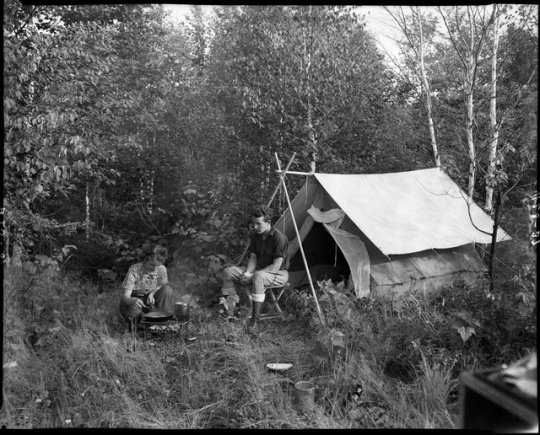
Elaine and Fred Roleff camping on the Gunflint Trail
Holding Location
Articles
More Information
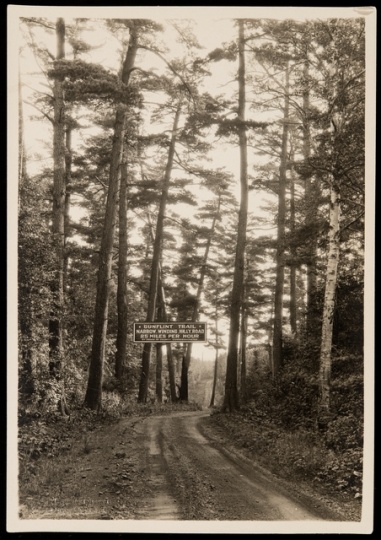
Road sign along the Gunflint Trail
Holding Location
Articles
More Information
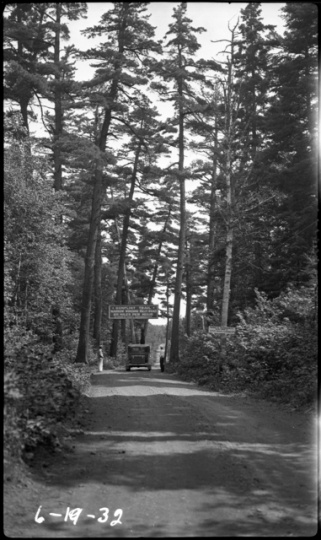
Car on Gunflint Trail road
Holding Location
Articles
More Information
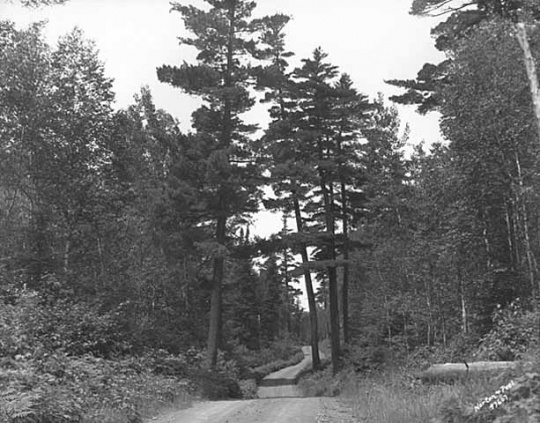
Pines towering over the Gunflint Trail
Holding Location
Articles
More Information

CCC Headquarters, Co. 712, Gunflint Camp F-5
Holding Location
Articles
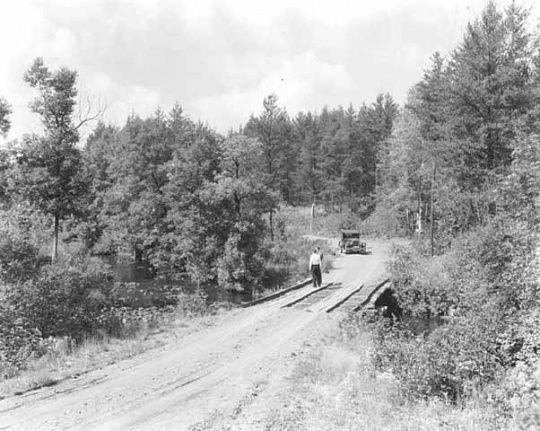
Car along the Gunflint Trail
Holding Location
Articles
More Information
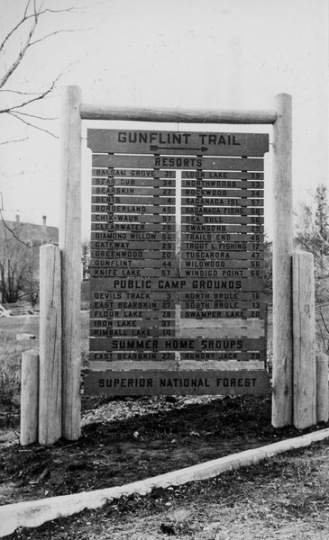
Entrance sign at Gunflint Trail
Public domain
Holding Location
Articles
More Information
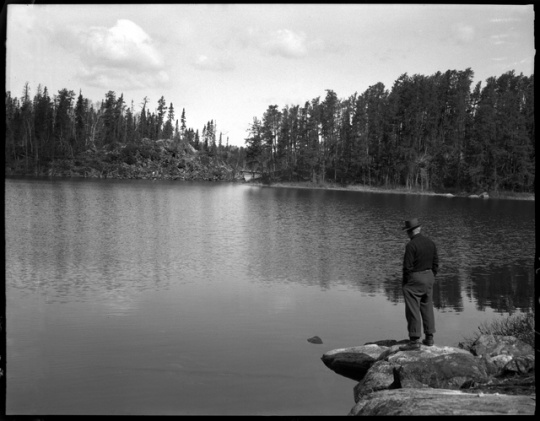
Lake along the Gunflint Trail
Holding Location
Articles
More Information
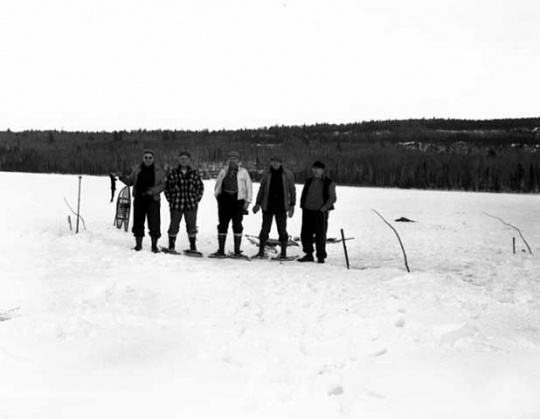
Men snowshoeing the Gunflint Trail
Holding Location
Articles
More Information
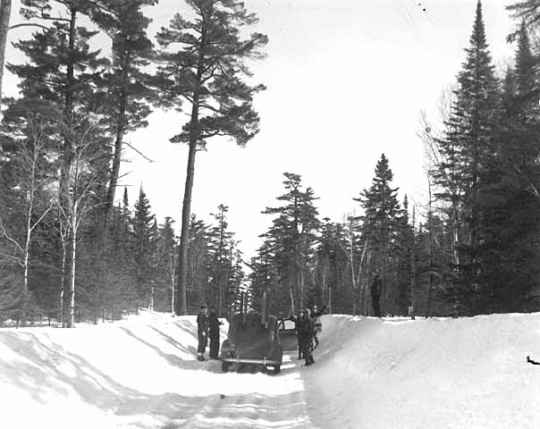
Car in winter on the Gunflint Trail
Holding Location
Articles
More Information

End of the Trail Lodge placemat
All rights reserved
Holding Location
Articles
More Information
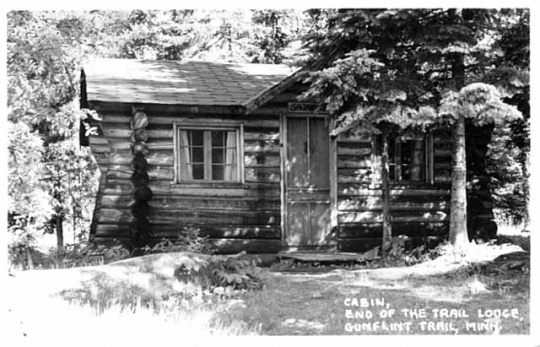
End of the Trail Lodge cabin
Holding Location
Articles
More Information
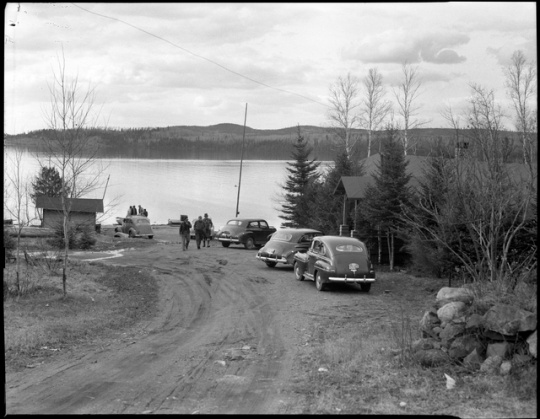
View at Gunflint Lodge
Holding Location
Articles
More Information
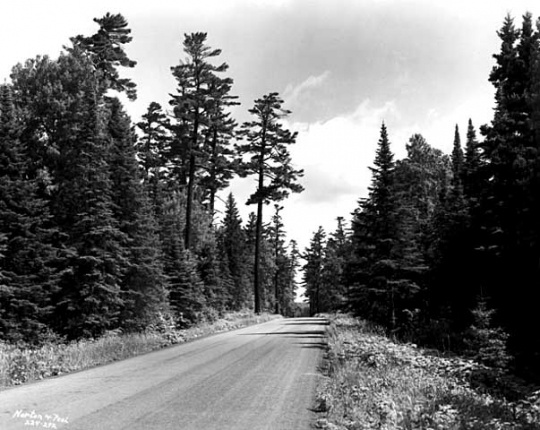
White Pines on the Gunflint Trail
Holding Location
Articles
More Information
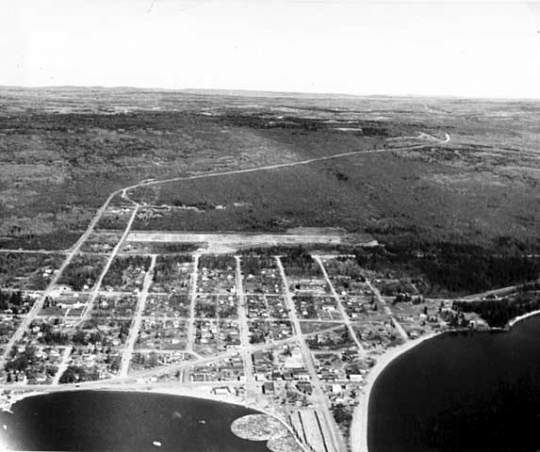
Aerial view of Grand Marais and the Gunflint Trail
Holding Location
Articles
More Information
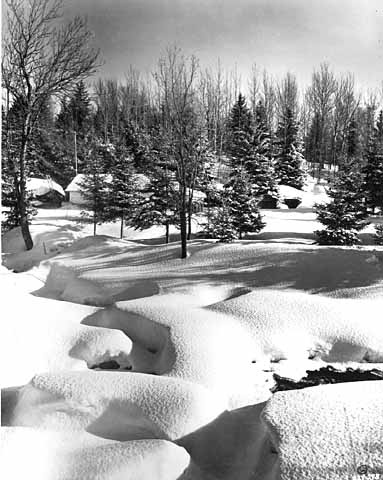
Winter on the Devil Track of the Gunflint Trail
Holding Location
Articles
More Information
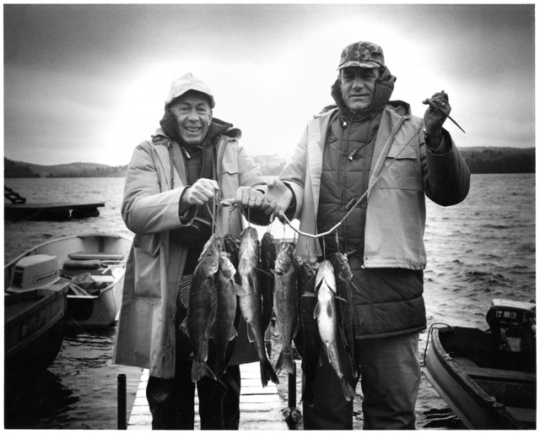
Minnesota Governor Karl Rolvaag and Iowa Governor Harold E. Hughes on Gunflint Lake
Holding Location
Articles
More Information
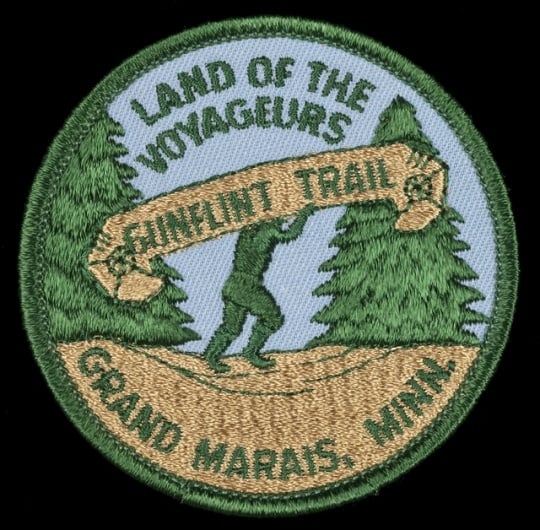
Gunflint Trail promotional patch
All rights reserved
Holding Location
Articles
More Information
![Map of the Gunflint Trail, also known as Cook County Road 12, across northeastern Minnesota. The trail starts in Grand Marais and extends for 57 miles to Saganaga Lake. The map was created by Wikimedia Commons user Fredddie [sic] on July 28, 2015. GNU free documentation license 1.2.](https://www3.mnhs.org/hubfs/Mnopedia%20Blogs/Map_Fredddie_Wikimedia_.png)
Map of Gunflint Trail/Cook County Road 12
Holding Location
Articles
More Information
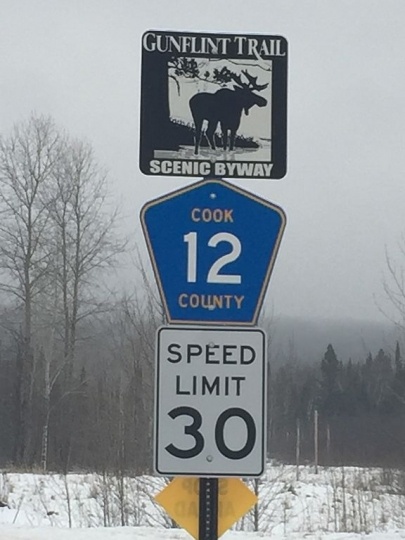
Gunflint Trail Scenic Byway road sign
Holding Location
Articles
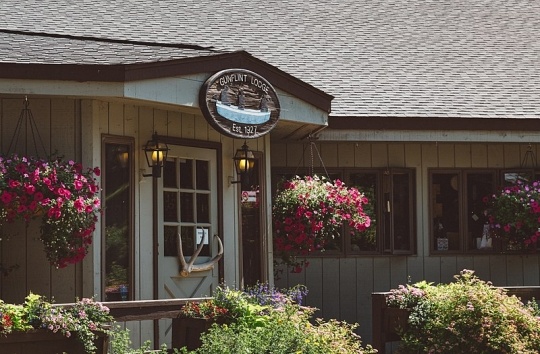
Gunflint Lodge
Holding Location
Articles

Sculpture at the beginning of the Gunflint Trail
All rights reserved
Holding Location
Articles
Turning Point
In 1891, the Cook County Board of Commissioners approves plans to extend the Gunflint Trail from milepost 24, at Hungry Jack Lake, to Gunflint Lake. Over the next two years, improvements and new construction along the trail result in a ten-foot-wide road, measuring forty-four miles in length.
Chronology
1875
1891
1893
1894
1920
1930s
1979
1985
1999
2007
2009
Bibliography
Baran, Madeleine. “Gunflint Trail, A ‘Road Built for No Reason’ Becomes National Scenic Byway.” MPR News, October 19, 2009.
https://www.mprnews.org/story/2009/10/19/gunflint-trail-historic-designation
Brill, W. H. “Indians and Priests Live Again in Names of Towns.” Minneapolis Morning Tribune, January 28, 1923.
Breining, Greg. “Boundary Waters: The Fire Next Time.” Minnesota Department of Natural Resources, May–June 2000. https://web.archive.org/web/20070405142656/http://www.dnr.state.mn.us/volunteer/mayjun00/blowdown.html
“Come See: The Gunflint Trail, Historical Grand Portage, the North Shore of Lake Superior, Grand Marais, Minnesota.” Grand Marais, MN: Chamber of Commerce, 1938.
“Consent to Conference.” Minneapolis Daily Star, August 28, 1926.
Cordes, Jim. The Treasures of Minnesota’s North Shore & Gunflint Trail: A Lake Superior Journey. Lutsen, MN: Jim Cordes, 2008.
Danielson, Erik. “A Taste of Gunflint Trail History - Part 1.” Clearwater Historic Lodge, August 24, 2015.
https://clearwaterhistoriclodge.com/a-taste-of-gunflint-trail-history-part-1
Griffith, Cary. Gunflint Burning: Fire in the Boundary Waters. Minneapolis: University of Minnesota Press, 2019.
“From Gunflint: Things Look Bright and Settlers in a Cheerful Mood.” Cook County Herald, May 19, 1906.
“The Gunflint Trail: The Trail That Became a Road.” East Bay Suites.
https://eastbaysuites.com/around-grand-marais/the-gunflint-trail-the-trail-that-became-a-road
Henricksson, John. Gunflint: The Trail, the People, the Stories. Cambridge, MN: Adventure Publications, Inc., 2003.
“Local News Items.” Cook County Herald, September 2, 1893.
“News-ettes of Grand Marais and Vicinity.” Cook County News-Herald, December 2, 1920.
“News-ettes of Grand Marais and Vicinity.” Cook County News-Herald, June 9, 1921.
“Official Proceedings: Meeting of the County Board of Cook County.” Cook County News-Herald, September 15, 1921.
Raff, Willis. Pioneers in the Wilderness: Minnesota’s Cook County, Grand Marais, and the Gunflint in the 19th century. Grand Marais, MN: Cook County Historical Society, 1988.
Steinke, Jay. Gunflint Territory. Duluth, MN: Tea Table Books, 1998.
Thorkelson, Berit. “Gunflint Trail Scenic Byway: Nature, Made to Order.” Explore Minnesota. https://www.exploreminnesota.com/travel-ideas/gunflint-trail-scenic-byway-nature-made-to-order
“Voice of the Outdoors.” Winona Republican-Herald, May 28, 1953.
Related Resources
Primary
Hart, Joanne, interviewer. Justine Kerfoot. Minnetonka, MN: Hennepin County Library, 1988.
Secondary
Kerfoot, Justine. Gunflint: Reflections on the Trail. Duluth: Pfeifer-Hamilton, 1991.
Lowry, Mark. Lady of the Gunflint Trail. St. Paul: Twin Cities Public Television, 1980.
Pro Video Productions, Inc. Winter on the Gunflint Trail. Duluth: Gunflint Trail Association, 1994.




















![Map of the Gunflint Trail, also known as Cook County Road 12, across northeastern Minnesota. The trail starts in Grand Marais and extends for 57 miles to Saganaga Lake. The map was created by Wikimedia Commons user Fredddie [sic] on July 28, 2015. GNU free documentation license 1.2.](https://www3.mnhs.org/hs-fs/hubfs/Mnopedia%20Blogs/Map_Fredddie_Wikimedia_.png?width=200&height=200&name=Map_Fredddie_Wikimedia_.png)


